Unit 4: Cell Communication and Cell Cycle
1/46
Earn XP
Name | Mastery | Learn | Test | Matching | Spaced |
|---|
No study sessions yet.
47 Terms
Cell Communication
The process by which cells can detect and respond to signals in their environment, facilitating interactions between cells and coordinating cellular activities. Responsible for the growth and development of multicellular organisms.
Direct Contact (Juxtacrine)
Communication through cell junctions (gap junctions in animal cells, plasmodesmata in plant cells). Signaling substances and other material dissolved in the cytoplasm can pass freely between adjacent cells.
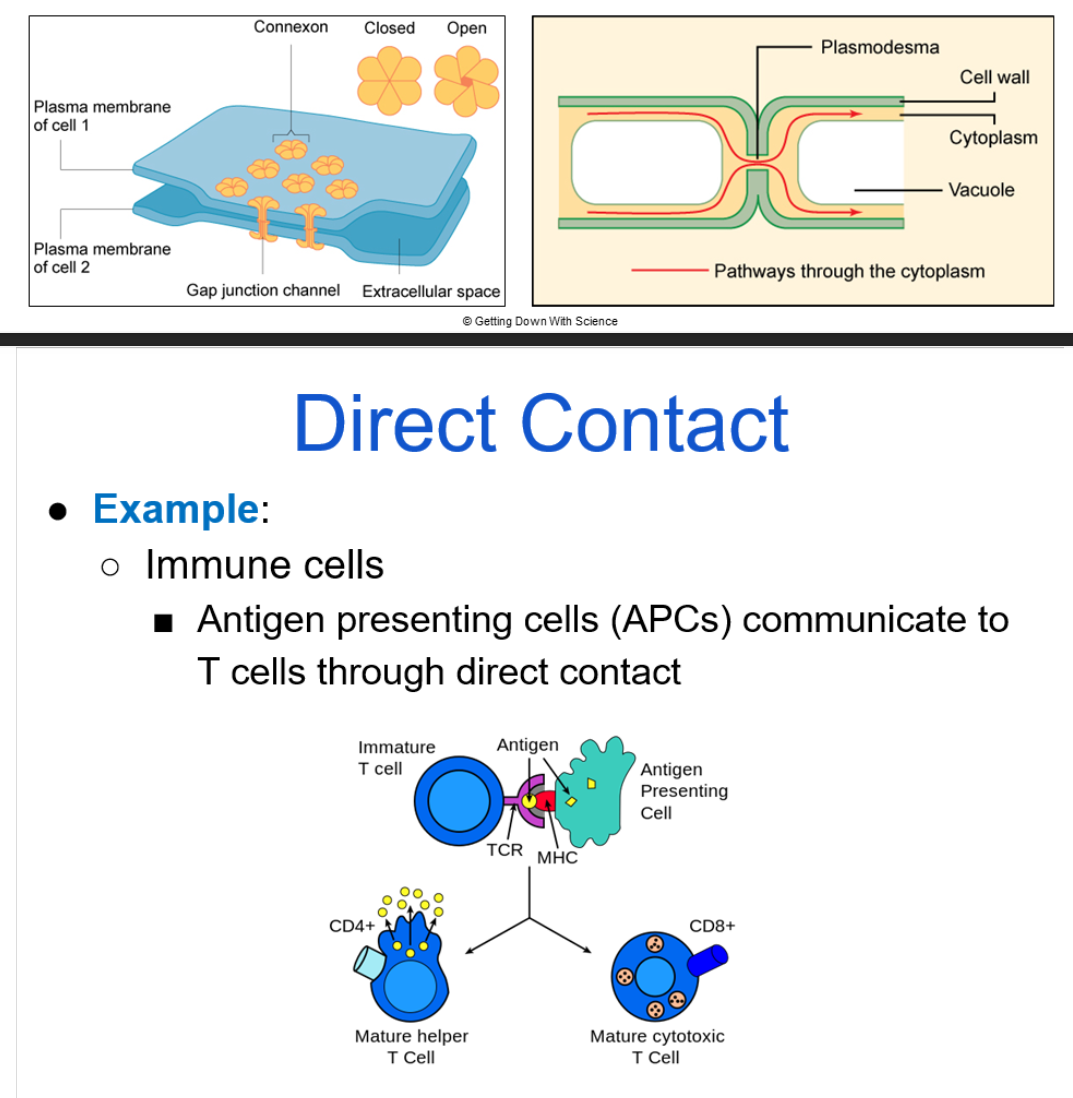
Local Regulators
A secreting cell will release chemical messages (ligands), that travel a short distance through the extracellular fluid. The ligand will cause a response in a target cell.
Ex: Paracrine signaling, synaptic signaling
Paracrine Signaling
Secretory cells release local regulators (growth factors) via exocytosis to an adjacent cell, which then triggers a response within that target cell.

Synaptic Signaling
Occurs in animal nervous systems, neurons secrete neurotransmitters that diffuse across the synaptic cleft-space between the nerve cell and the target cell.
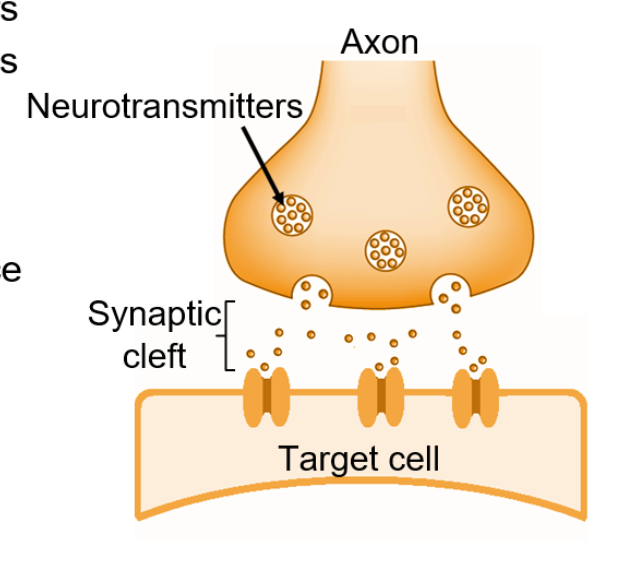
Long Distance Signaling (Endocrine)
Involves the release of hormones from endocrine cells that travel through the bloodstream to target cells located far away, triggering specific responses. (Plants use vascular tissue or the air to reach target cells).
Reception
Ligand binds to the receptor.
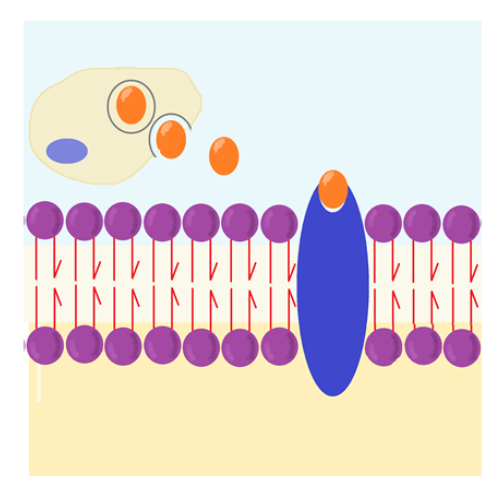
Transduction
is the process by which a cell converts an external signal received by a receptor into a functional response, often involving a series of biochemical events.
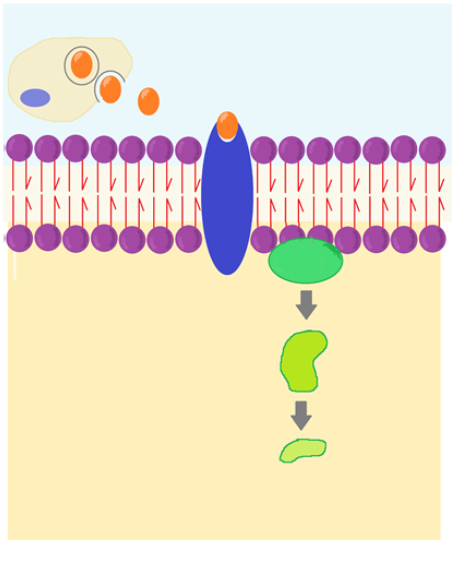
Response
is the final outcome of a signal transduction pathway, in which the target cell carries out a specific action, such as gene expression, enzyme activity, or changes in cellular behavior.
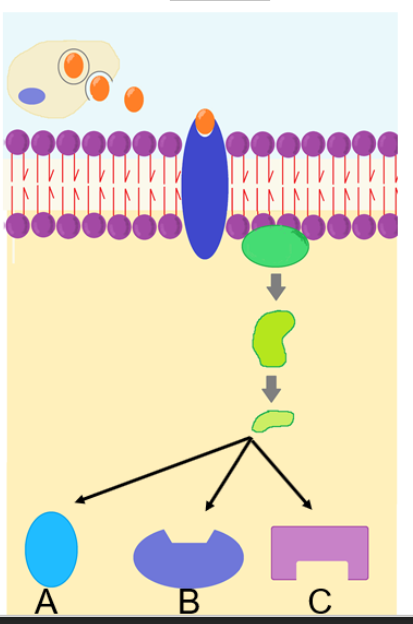
Plasma Membrane Receptors
Most common type of receptor, bind to ligands that are polar, water-soluble, and large.
Ex: G protein coupled receptors, ligand-gated ion channels.
Intracellular Receptors
Found in the cytoplasm or nucleus of target cell, binds to ligands that can pass through plasma membrane. These receptors often interact with DNA to regulate gene expression.
GPCRs
G protein-coupled receptors (GPCRs) are a large family of membrane receptors that detect molecules outside the cell and activate internal signal transduction pathways. They play a critical role in various physiological processes and are targets for many pharmaceuticals.
Ion Channels
Membrane proteins that form pores allowing specific ions to flow in and out of the cell, playing key roles in the signaling processes of cells.
Negative Feedback
A regulatory mechanism in which a change in a physiological variable triggers responses that counteract the initial change, helping to maintain homeostasis in the body.
Positive Feedback
A regulatory mechanism where an initial change in a physiological variable stimulates further change in the same direction, often leading to an amplified response until a specific endpoint is reached.
Effector
Muscle or gland that will respond.
Cell Cycle
The series of stages that a cell goes through leading to its division and replication. It consists of phases including interphase, mitosis, and cytokinesis.

Organization of DNA
DNA associates with and wraps around histones to form nucleosomes. Strings of nucleosomes form chromatin. After DNA replication, chromatin condenses to form a chromosome which are densely packed.
Centromere
The region on each sister chromatid where they re most closely attached.
Kinetochore
Proteins attached to the centromere that link each sister chromatid to the mitotic spindle.
Genome
The complete set of genetic material present in an organism, including all its genes and non-coding sequences.
Somatic Cells
The non-reproductive cells of an organism, containing two sets of chromosomes, one from each parent.
Gametes
Reproductive cells that unite during fertilization to form a new organism, specifically sperm and eggs.
Interphase
The phase of the cell cycle in which the cell prepares for division, including growth, DNA replication, and metabolic activities.
G1 Phase
The first stage of interphase where the cell grows, synthesizes proteins, and produces organelles.
S Phase
The phase of the cell cycle where DNA is replicated, resulting in two sister chromatids for each chromosome.
G2 Phase
The second gap phase of interphase where the cell undergoes further growth, prepares the necessary proteins and organelles for mitosis, and ensures that DNA has been accurately replicated.
M Phase
The phase of the cell cycle where mitosis and cytokinesis occur, leading to the division of the cell into two daughter cells.
Mitosis
The process of cell division that separates the duplicated chromosomes into two identical nuclei. It includes several stages: prophase, metaphase, anaphase, and telophase.
Cytokinesis
The process that follows mitosis, where the cytoplasm of a parental cell is divided into two daughter cells, completing cell division.
Prophase
Chromatin condenses, nucleoli disappear, duplicated chromosomes appear as sister chromatids, mitotic spindle begins to form, and centrosomes move away from each other.
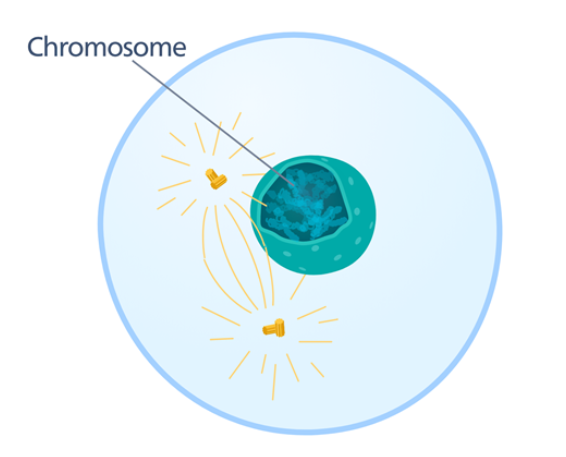
Metaphase
Centrosomes are at opposite poles, chromosomes line up at the metaphase plate, and microtubules are attached to each kinetochore.
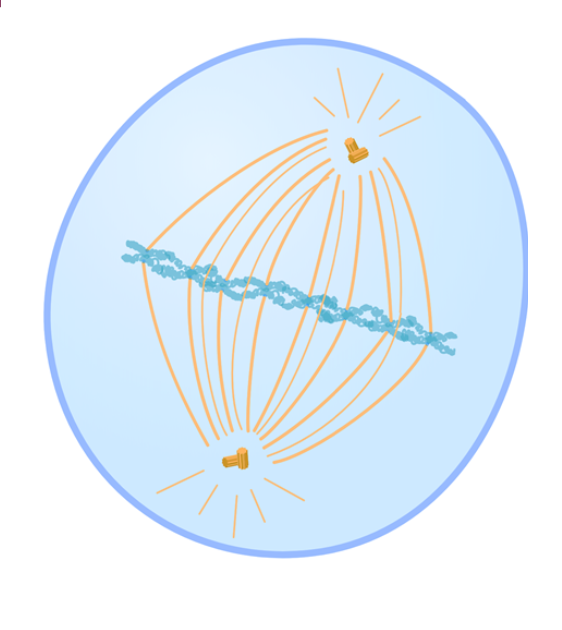
Anaphase
Sister chromatids separate and move to opposite ends of the cell due to microtubules shortening, cell elongates.
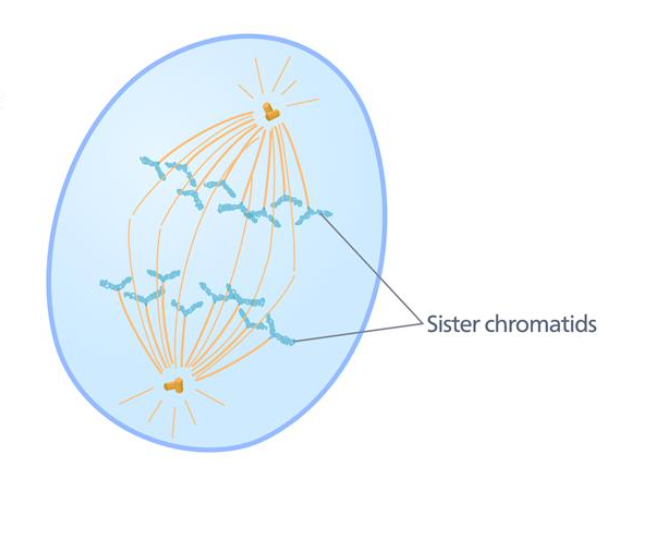
Telophase
Two daughter nuclei form, nucleoli reappear, chromosomes become less condensed and the mitotic spindle disassembles, marking the near end of mitosis. Then cytokinesis occurs, finally splitting into two different cells.
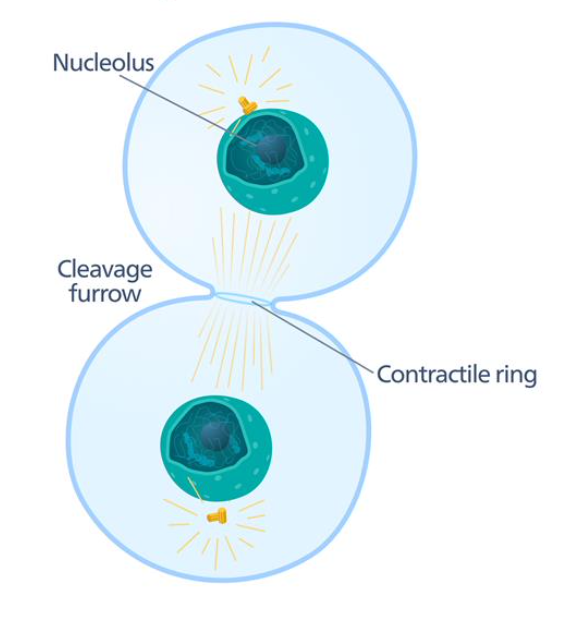
G1 Checkpoint
A key regulatory point in the cell cycle where the cell assesses its size, DNA integrity, and nutrient availability before progressing to the S phase. Proper functioning ensures damaged DNA is repaired or the cell is directed to apoptosis if necessary.
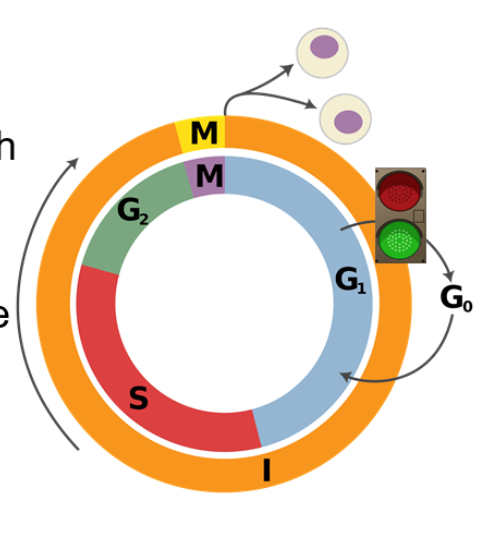
G0 Checkpoint
A phase where cells exit the cell cycle and enter a state of quiescence, temporarily or permanently not dividing.
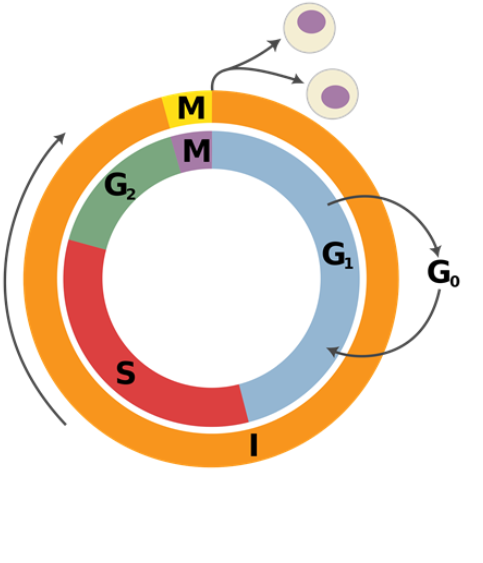
G2 Checkpoint
A regulatory point in the cell cycle that assesses DNA replication completeness and checks for DNA damage before the cell enters mitosis.
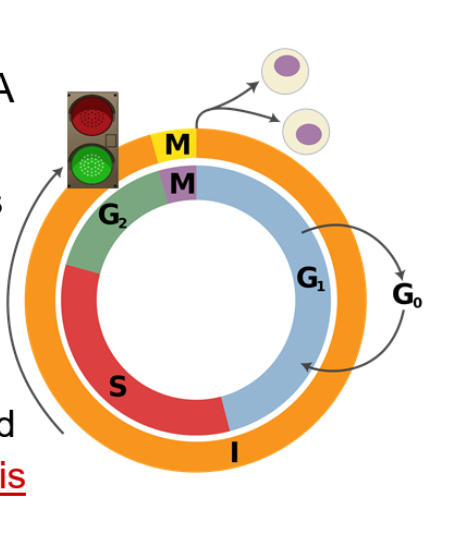
M (Spindle) Checkpoint
The M checkpoint, also known as the spindle checkpoint, is a crucial stage in cell division that ensures chromosomes are properly aligned and attached to the mitotic spindle before allowing the cell to proceed with mitosis.
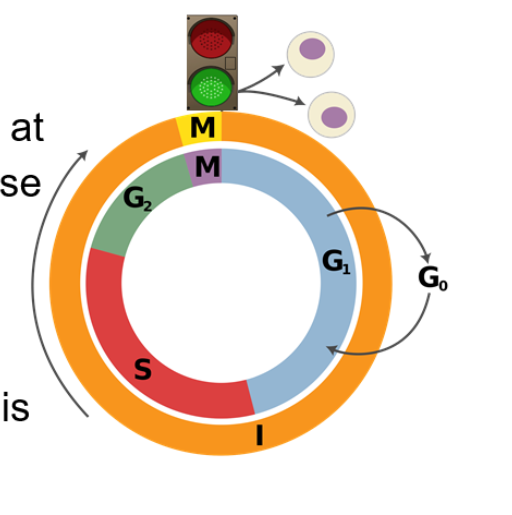
Cyclins
Regulatory proteins that control the progression of cells through the cell cycle by activating cyclin-dependent kinases.
Cyclin-dependent Kinases (CDKs)
Enzymes that regulate the cell cycle by binding to cyclins, triggering cell cycle progression through phosphorylation.
Growth Factors
Hormones released by cells that stimulate cell growth. Signal transduction pathway is initiated, CDKs are activated leading to progression through the cell cycle.
Contact (or density) Inhibition
Cell surface receptor recognize contact with other cells, initiates signal transduction pathway that stops the cell cycle in G1 phase.
Anchorage Dependence
Cells rely on attachment to other cells or the extracellular matrix to divide.
Cancer
A group of diseases characterized by abnormal cell growth, resulting in uncontrolled division and potential spread to other parts of the body. Usually caused by DNA mutations, they do not follow checkpoints and evade apoptosis.
Benign Tumor
A non-cancerous growth that does not invade surrounding tissues or spread to other parts of the body. Benign tumors can grow large but generally remain localized.
Malignant Tumor
Mass of cancerous cells that lose their anchorage dependency and can leave the tumor site.
Metastasis
When cells separate from the tumor and spread elsewhere in the body.